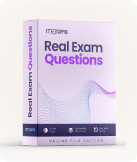IIBA CCBA - Certification of Competency in Business Analysis Exam
Page: 1 / 105
Total 521 questions
Question #1 (Topic: Single Topic)
You are currently working on creating the activity list for an initiative in your organization. What characteristic must be assigned to each task in your task list?
A. Procurement needs
B. Risk level
C. Unique number
D. Roles and responsibilities
Answer: Answer: B is incorrect. The risk level is not associated with the task list.
Question #2 (Topic: Single Topic)
Shelly is the business analyst for her organization and she's working with Thomas to review the business requirements. They are discussing the identified
requirements, how the requirements will transition to the operations, and the longevity of the solution. Thomas is concerned that the identified requirements may
not map to the desired future state of the organization. What business analysis task is Shelly facilitating in this scenario?
requirements, how the requirements will transition to the operations, and the longevity of the solution. Thomas is concerned that the identified requirements may
not map to the desired future state of the organization. What business analysis task is Shelly facilitating in this scenario?
A. Acceptance evaluation criteria definition
B. Requirements quality assurance
C. Validate requirements
D. Stakeholder management
Answer: Answer: B is incorrect. There is not a business analysis task called requirements quality assurance.
Question #3 (Topic: Single Topic)
Which of the following are documented approaches to the business analysis work? Each correct answer represents a complete solution.
A. Deming's Quality Circle
B. Lean
C. Six Sigma
D. Waterfall approach
Answer: Answer: A is incorrect. Deming's Quality Circle describes the quality management approach of plan, do, check, and act. This isn't a business analysis approach.
Question #4 (Topic: Single Topic)
You are the business analyst for your organization and working with the stakeholders to prioritize the requirements. The stakeholders are concerned about the
financial impact of the requirements should some of them fail during the implementation. You would like to rank the risk tolerance of the stakeholders based on
their comments about the solution and the requirements. The following are the three categories of risk tolerance associated with the stakeholders except for which
one?
financial impact of the requirements should some of them fail during the implementation. You would like to rank the risk tolerance of the stakeholders based on
their comments about the solution and the requirements. The following are the three categories of risk tolerance associated with the stakeholders except for which
one?
A. Neutrality
B. Mitigation
C. Risk-seeking
D. Risk-aversion
Answer: B
Question #5 (Topic: Single Topic)
Tracy is a business analyst for her organization and she's gathered and identified the needed requirements for the solution scope. What must Tracy do before she
can begin managing the requirements? Choose the best answer.
can begin managing the requirements? Choose the best answer.
A. Tracy must decompose the requirements in WBS.
B. Tracy must create cost-benefits analysis of each requirement to manage the benefits first.
C. Tracy must identify roles, responsibilities, and owners of the requirements to fully manage the requirements.
D. Tracy must communicate the requirements to the stakeholders for their consent and approval.
Answer: Answer: A is incorrect. Before Tracy decomposes the requirements, she should have the approval of the stakeholders.
